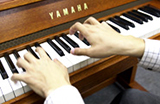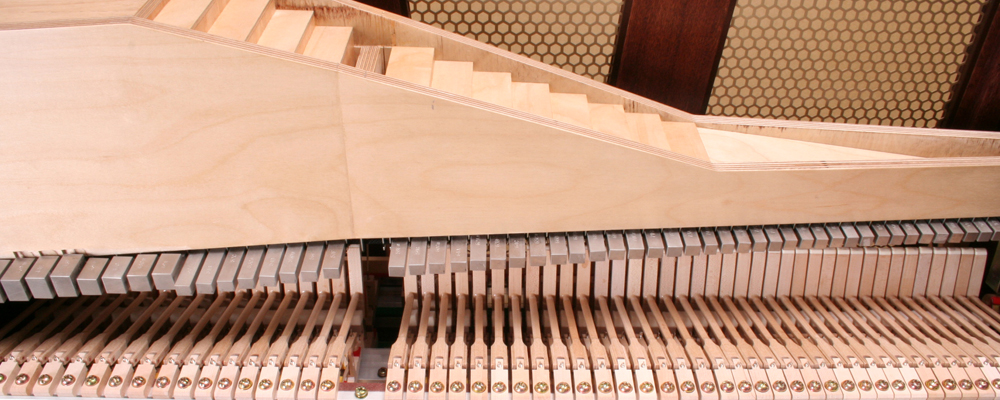The origins of the Celesta
The birth of the celesta
Celestas look like an organ but sound like a metallophone
The celesta was invented roughly 130 years ago in 1886 by Auguste Mustel, a Parisian organ maker. It has a keyboard and is sized and shaped like an organ, but its sound is completely different: soft and adorable but able to carry over quite a distance.
Like a metallophone, celestas feature a graduated set of metal sound bars inside. When played, hammers strike these bars and produce sound, making the celesta a percussion instrument with a keyboard action mechanism.
Let's listen to the sound of the celesta

From Tchaikovsky's ballet music, to the world...
A composer who fell in love with the adorable music of the celesta would play a leading role in popularizing it throughout the world. That composer was Pyotr Tchaikovsky (1840-1893).
Tchaikovsky first heard the celesta while walking in Paris prior to traveling to America to play a concert. He needed to leave for America but sent a letter to Pyotr Jurgenson, a close friend and music publisher in Russia, asking him to order a celesta for around 1,200 francs. In his letter he wrote, "I don't want you to show the celesta to anyone-especially not Rimsky-Korsakov or Glazunov. I am to be the first to use this instrument!"
He first made use of the celesta in "Dance of the Sugar Plum Fairy" in his ballet, "The Nutcracker" in 1892. This ballet was a huge success and ballet troupes all over the world wanted to perform it, so orchestras and opera houses throughout the world began to order celestas.

Located near the Arc de Triomphe, the Mustel Company stopped selling celestas around 30 years ago. It is now an electronics store.
The celesta was also popular among the impressionists and the late romantics
The celesta went on to gain popularity with Maurice Ravel (1875-1937), Claude Debussy (1862-1918), and other impressionist composers, and then with late romanticists such as Richard Strauss and Gustav Mahler. Used often even by modern musicians, the celesta is now firmly established as a legitimate instrument.
Incidentally, Ravel is often called the "magician of sound," and in his "Bolero" the celesta is accompanied by one horn and two piccolos. This results for a mysterious and very charming performance.

